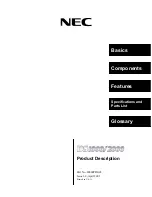
© Opticstar Ltd 2013-2015
12
OCTOBER
Andromeda
MGN
M31
A large and bright galaxy. Although it appears more than six times as wide as the full Moon, only the brighter core is
visible to the naked eye.
4.5
M32
Situated by M31 in Andromeda the M32 is a dwarf elliptical galaxy about 2.65 million light-years away from Earth.
10.0
Cassiopeia.
M103
A bright open cluster of 170 stars.
6.4
NGC457
The Owl open Cluster is close to the M103 and consists of approximately 100 colourful stars.
6.7
NGC663
A reasonably bright cluster with around 400 stars found close to the M103.
7.10
NGC7789
A spectacular cluster with over 1,000 stars.
8.28
Cetus
M77
A near face-on galaxy with an extremely bright centre, its outer parts are difficult to distinguish.
10.5
Triangulum
M33
The Triangulum Galaxy is a dim face-on spiral 3 million light years from Earth. It can be observed under very good
conditions.
7.0
NOVEMBER
Cassiopeia
MGN
M103
Open cluster located in Cassiopeia with around 170 stars.
7.0
Perseus
NGC869
Open cluster that in small telescopes appears as a beautiful assemblage of bright stars in a rich star field. The cluster
is dominated by bright blue stars and also hosts a few orange stars that add to the visual effect.
3.7
NGC884
Open cluster with around 500 stars. It is very close to NGC869, the two can be observed as a pair.
6.1
M34
Star cluster in the constellation of Perseus. In small scopes only the brightest stars are visible forming a X shape.
6.0
Taurus
M45
The Pleiades star cluster consists of around 500 stars surrounded by gas and dust only visible in large instruments. It
is also home to several brown dwarf stars Otherwise the cluster is dominated by hot blue stars of very high luminosity
that have formed within the last 100 million years.
1.39
Hyades
The closest open cluster to our Solar System. A V shaped group of its brighter stars outline the head of the Bull in the
constellation of Taurus.
0.5
Camelopardalis
M1
The Crab Nebula is a supernova remnant.
9.0
DECEMBER
Auriga.
MGN
NGC1907
Open cluster.
8.19
M36
Open cluster that consists of a dozen brighter stars against a background of fainter stars.
6.5
M37
An interesting open cluster with hundreds of stars. Fainter stars surround the central 9
th
magnitude red hue star near
the centre adding to the cluster’s attraction.
6.0
M38
A 220 million years old open cluster with dark lanes with bright and double stars being present.
7.0
Orion
M42
An easy object to observe and enjoy with any type of instrument. Will take magnification very well. At its centre, the
Trapezium which is a group of four stars causes the nebula to emit light by heating the surrounding gas clouds.
5.0
M43
A bright emission nebula in the constellation of Orion, in reality part of the M42. It takes magnification well to reveal
faint stars in the nebula and detail at its edges.
7.0
NGC1981
Open cluster in Orion with around 40 stars.
4.2
Lepus
M79
Globular cluster.
8.5


































